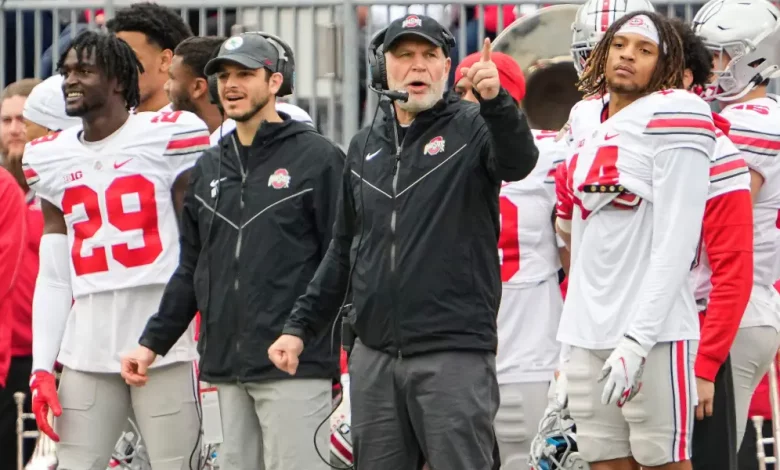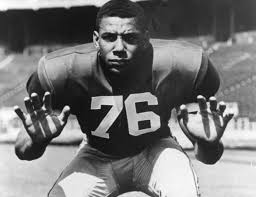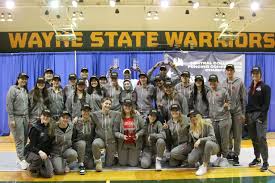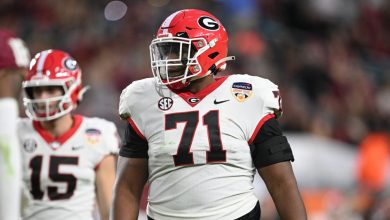Jim Knowles, the defensive coordinator target for Oklahoma football, has joined Penn State.

In college football, coaching changes and personnel shifts can have far-reaching consequences, particularly when it comes to key positions like defensive coordinator. For Oklahoma football, a program with national aspirations and a rich history of success, the search for a new defensive coordinator has been under intense scrutiny. The Sooners were hoping to strengthen their defensive unit under head coach Brent Venables, who was brought in to restore Oklahoma’s defensive identity. However, when reports surfaced that Jim Knowles, one of their top targets for the position, decided to join Penn State instead, it marked a significant moment in Oklahoma’s coaching search and set the stage for further uncertainty in the program.
Jim Knowles was widely regarded as one of the top defensive minds in college football. His work at Oklahoma State, where he served as the defensive coordinator from 2018 to 2021, earned him acclaim for building a tough, aggressive defense that was a key part of the Cowboys’ success. His ability to create a disruptive, opportunistic defense caught the attention of many programs, including Oklahoma, who was looking to bolster their own defensive staff. However, Knowles’ decision to join Penn State, rather than take the position at Oklahoma, sent a ripple through the college football world, and particularly through the Sooner faithful.
This article takes a closer look at Jim Knowles’ decision to join Penn State, its implications for Oklahoma football, and what this move means for the future of the Sooners’ defense under Brent Venables. By understanding Knowles’ background, why he chose Penn State over Oklahoma, and the potential consequences for both programs, we can gain a deeper understanding of the challenges facing Oklahoma as they continue to search for the right leadership to turn their defense into a championship-caliber unit.
Jim Knowles’ Coaching Journey and Reputation
Before diving into the specifics of his decision to join Penn State, it’s important to understand the background of Jim Knowles and why he was such a sought-after candidate for defensive coordinator positions.
Jim Knowles’ rise to prominence began at Duke, where he served as the defensive coordinator for several seasons. His work at Duke, particularly with the Blue Devils’ defense, was well-regarded and caught the attention of bigger programs. However, it was his time at Oklahoma State that truly cemented his reputation as one of the best defensive minds in college football.
During his tenure as the defensive coordinator at Oklahoma State (2018-2021), Knowles transformed the Cowboys’ defense from one of the most underperforming units in the Big 12 into one of the most formidable. His defenses were known for their aggressive, high-pressure style of play, often forcing turnovers and wreaking havoc on opposing quarterbacks. His work in developing and mentoring players like linebacker Malcolm Rodriguez and safety Kolby Harvell-Peel made Oklahoma State’s defense one of the most feared in the Big 12.
Knowles was known for his ability to adapt his schemes to exploit opponents’ weaknesses. His defenses were flexible, balanced, and well-coached, consistently improving year-over-year. The fact that Knowles was able to elevate Oklahoma State’s defense in a conference known for its high-scoring offenses was a testament to his skill as a defensive strategist.
It was no surprise that Oklahoma, which had been seeking a defensive coordinator who could bring a similar level of intensity and discipline to their program, took notice of Knowles’ success. With Brent Venables trying to rebuild Oklahoma’s defense after the departure of Lincoln Riley, the Sooners targeted Knowles as a potential fit. However, Knowles ultimately chose to join Penn State, a decision that surprised some and raised questions about Oklahoma’s defensive future.
Why Jim Knowles Chose Penn State Over Oklahoma
Jim Knowles’ decision to join Penn State was a surprising twist in Oklahoma’s coaching search, and understanding why he chose the Nittany Lions over the Sooners requires analyzing several key factors.
1. Stability and Program Culture
One of the primary reasons Knowles may have chosen Penn State over Oklahoma is the overall stability and culture of the Nittany Lions’ program. Penn State, under head coach James Franklin, has been a consistently successful program in the Big Ten. While the program has faced challenges, it has maintained a level of consistency and a strong foundation that makes it an attractive destination for coaches. The Nittany Lions have a proud defensive tradition, and Knowles likely saw an opportunity to work in an environment that valued defense and had a program culture he could align with.
In contrast, Oklahoma is in a period of transition. While the Sooners have a storied history and a powerful recruiting base, they are currently navigating a coaching change under Brent Venables and preparing for a move to the SEC. The uncertainty surrounding the program, especially as it shifts to a more competitive conference, could have made Oklahoma less appealing to Knowles, who may have preferred a more stable and familiar environment to continue his career. Penn State’s tradition of defensive excellence and its role as a championship contender in the Big Ten likely made it a more attractive option in the long run.
2. The Big Ten Challenge
The Big Ten is one of the most competitive conferences in college football, and Penn State is consistently in the hunt for major bowl games and playoff contention. The program has been a consistent competitor with Michigan, Ohio State, and others in the Big Ten, and Knowles likely saw this as an exciting opportunity to face some of the best offenses in the country while building his own legacy. Penn State has a strong defense-oriented philosophy, and Knowles could see his defensive schemes fitting seamlessly into the Nittany Lions’ system.
For Knowles, coaching in the Big Ten may have also presented an opportunity to work against offenses that are traditionally tougher and more physical than those in the Big 12. Facing teams like Ohio State, Michigan, and Wisconsin every season presents a unique challenge that could have been a driving force behind his decision. This kind of competition may have appealed to Knowles, who has always thrived when developing tough, physical defenses.
On the other hand, Oklahoma is transitioning to the SEC, which, while a prestigious conference, is also a new environment with a different level of competition. Knowles may have believed that his skill set would be better suited to the Big Ten, where he could establish himself in a more defensive-minded conference. While the SEC is certainly a powerhouse, it also presents a unique set of challenges that may have made the Penn State position more enticing at this stage of his career.
3. Opportunity for Development and Growth
While Oklahoma has a great football tradition, Penn State offered Knowles a unique opportunity to continue his development and growth as a coach. James Franklin has established a program that is well-funded and consistently in the national conversation. As Penn State looks to break through and reach the College Football Playoff, Knowles could play a pivotal role in shaping the team’s defensive future. With a solid recruiting pipeline and a proven track record, Penn State offered Knowles a chance to have an immediate impact on a top-tier program.
For Oklahoma, the allure of the SEC might have been less appealing to Knowles, especially given the growing pains associated with moving into a conference full of powerhouses. While Oklahoma’s move to the SEC provides an opportunity to elevate the program to a new level, it also presents many challenges that Knowles might have wanted to avoid. The potential for immediate success and the overall vision at Penn State likely provided more stability for Knowles than Oklahoma’s future uncertainties.
What This Means for Oklahoma Football
Jim Knowles’ decision to join Penn State over Oklahoma leaves the Sooners in a precarious position as they continue their search for a defensive coordinator. The Sooners have been in a transition period under Brent Venables, who has faced the daunting task of rebuilding Oklahoma’s defense while preparing for the move to the SEC. Losing out on a coach of Knowles’ caliber is a significant blow for the program.
Venables’ primary goal since arriving at Oklahoma has been to restore the defense to a championship level, and bringing in a defensive coordinator with a proven track record like Knowles would have been a key piece of that puzzle. However, with Knowles now off the table, the Sooners must pivot and consider other options to fill the void.
The question that arises is whether Oklahoma can find another coach who can bring the same level of defensive expertise and ability to elevate the team’s play. The Sooners will need to be strategic in their search for a defensive coordinator who can execute Venables’ vision and help the team adjust to the challenges of the SEC. The decision to move forward without Knowles may force the Sooners to lean heavily on Venables’ own defensive acumen and coaching staff to develop the defense for the 2024 season.
Additionally, Oklahoma will need to address its recruiting efforts to continue building a strong defense, as Knowles’ success at Oklahoma State was partially due to his ability to develop talent. Oklahoma must ensure that it continues to bring in the right recruits to build a competitive defense capable of contending at the highest levels.
The Road Ahead for Oklahoma Football
Jim Knowles’ decision to join Penn State is a setback for Oklahoma football, particularly in its quest to rebuild a dominant defense. While Knowles’ move may have surprised many, it underscores the challenges that Oklahoma faces as it navigates a period of transition and uncertainty. Brent Venables and the Sooners will now have to regroup and search for a defensive coordinator who can help lead the team to the next level.
The road ahead for Oklahoma is far from easy, especially with the looming transition to the SEC. However, the Sooners have the resources, the program history, and the coaching staff to rebound from this setback. As they continue their search for a defensive coordinator, Oklahoma will need to remain focused on their long-term vision of becoming a powerhouse in the SEC while maintaining a commitment to defensive excellence. Jim Knowles’ decision may have been a disappointment, but it also presents an opportunity for Oklahoma to find a coach who aligns more closely with the program’s needs moving forward.









